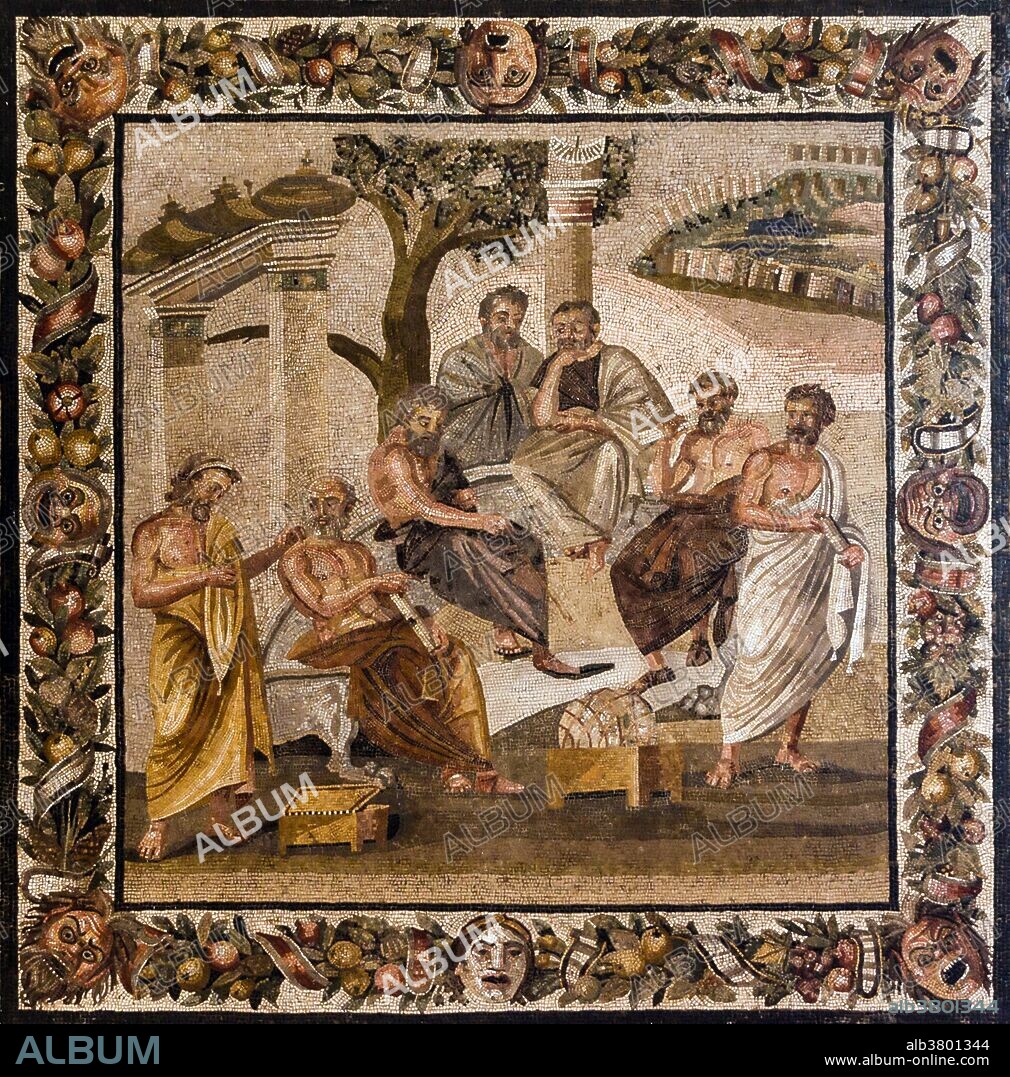alb3801344
Plato's Academy Mosaic, 1st Century BC

|
Añadir a otro lightbox |
|
Añadir a otro lightbox |



¿Ya tienes cuenta? Iniciar sesión
¿No tienes cuenta? Regístrate
Compra esta imagen

Título:
Plato's Academy Mosaic, 1st Century BC
Descripción:
Traducción automática: El mosaico de la Academia de Platón se construyó en el siglo I a. C., en la villa de T. Siminius Stephanus en Pompeya. El mosaico presenta a siete hombres: seis estudiantes y, presumiblemente, su maestro, Platón. Todas las figuras están en profunda contemplación o discusión. El hombre central, probablemente Platón, parece estar señalando algo con un palo. Las interpretaciones tradicionales creen que está gesticulando hacia el globo que se ve en primer plano. Los elementos que rodean a los filósofos, la puerta sagrada con jarrones, el árbol y la columna votiva, son todos típicos de un paisaje mitológico. Al fondo hay una vista de la acrópolis de Atenas. El borde muestra elaborados festones de hojas, frutas y máscaras teatrales de criaturas fantásticas, como era común durante este período.
Plato's Academy mosaic was constructed in the 1st century BC, in the villa of T. Siminius Stephanus in Pompeii. The mosaic features seven men: six students and, presumably, their teacher, Plato. All the figures are deep in contemplation or discussion. The central man, most likely Plato, seems to be pointing at something with a stick. The traditional interpretations believe he is gesturing at the globe seen in the foreground. The elements surrounding the philosophers, the sacred gateway with vases, the tree and the votive column, are all typical of a mythological landscape. In the background there is a view of the acropolis of Athens. The border depicts elaborate festoons of leaves, fruits, and theatrical masks of fantastic creatures, as was common during this time period.
Personas:
Crédito:
Album / Science Source
Autorizaciones:
Modelo: No - Propiedad: No
¿Preguntas relacionadas con los derechos?
¿Preguntas relacionadas con los derechos?
Tamaño imagen:
3750 x 3802 px | 40.8 MB
Tamaño impresión:
31.8 x 32.2 cm | 12.5 x 12.7 in (300 dpi)
Palabras clave:
ANCIENT GREEK • ANTIGUO • ANTIGÜEDAD • ARQUEOLOGIA • ARQUEOLÓGICA • ARQUEOLOGICO • ARTE • ARTEFACTO • ATENIENSE • CIVILIZACION ANTIGUA • CULTURA ANTIGUA • ETICA • FAMOSO • FIGURA • FILOSOFIA • FILOSOFO NATURALISTA • FILOSOFO • GENTE • GRIEGO ANTIGUO • GRIEGO • HISTORIA • HISTORICO • HOMBRE • HOMBRES • IMPERIO ROMANO • IMPORTANTE • ITALIA • LOGICA • MASCULINO • MATEMÁTICO • MOSAICO • OBRA DE ARTE • PERSONA • PERSONALIDAD • PERSONALIDADES • PLATO • POMPEYA • RETRATO DE HOMBRE • ROMANO • SIGLO-I • VILLA ROMANA
 Pinterest
Pinterest Twitter
Twitter Facebook
Facebook Copiar enlace
Copiar enlace Email
Email
